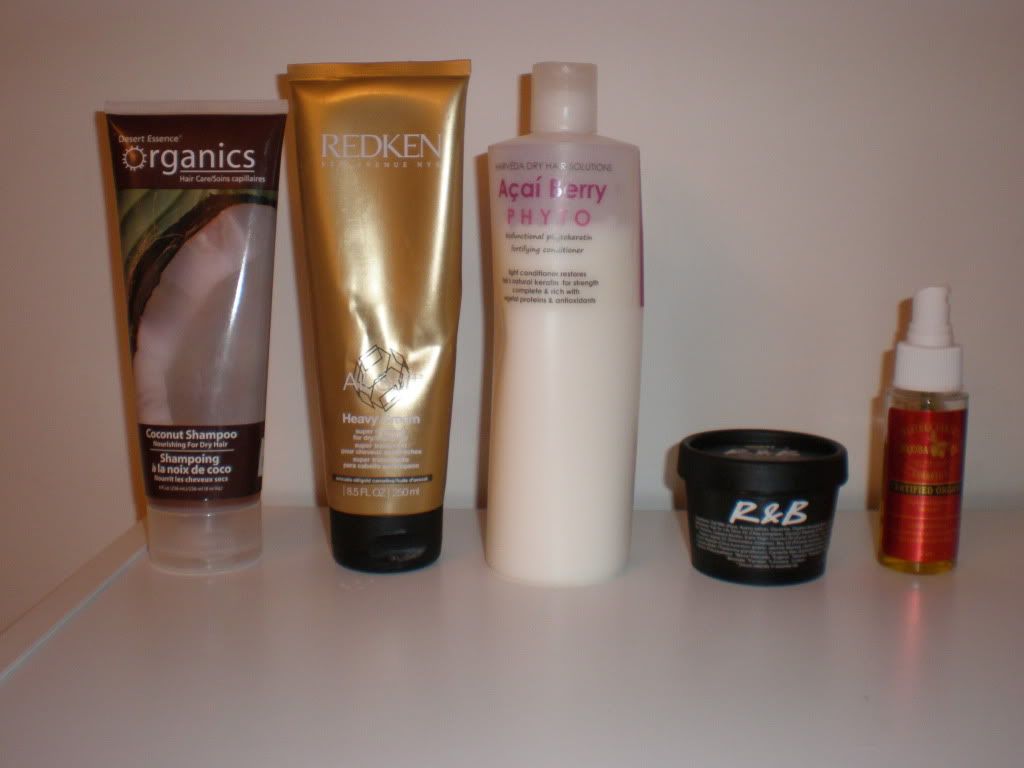Saturday, August 13, 2011
Hair survival basics
In order for your hair to reach it's maximum potential, there are a few things you'll need to keep your hair well nourished, balanced, and beautiful. The following is a list of what you'll need, and why you need it.
Shampoo: The purpose of shampoo is to keep the hair and scalp fresh and clean. It is not recommended to shampoo everyday, because it can be drying to the hair. Remember, when choosing a shampoo it's best to choose one that says sulfate free. Whenever possible choose on that says the words "hydrating" or "moisturizing" on the bottle. Such as these:
Shampoo should be used once or twice a week, if you are like me, and need to cleanse your hair more than that, that's when "cowashing" would come into the picture. Cowashing will be mentioned in a later post.
NOTE: When washing your hair apply shampoo TO THE SCALP ONLY!!! DO NOT APPLY TO ALL OF YOUR HAIR! this can make your hair dry and rough. Once you have applied the shampoo to the scalp, let the lather from the shampoo run through the rest of your hair while you rinse.
Deep Conditioner: Deep conditioning is the most important process of hair care that seems to be over looked. Deep conditioning is key to hair care because it provides much needed nourishment and moisture that hair needs to thrive. Many people suffer from dry, frizzy, and matted hair due to lack of deep conditioning.
1. When applying deep conditioner, apply to the hair only, not the scalp.
2. Section your hair down the middle, or in four parts to ensure even penetration of the conditioner and less tangles upon combing the hair. It's VERY important to comb the conditioner through your hair!
3. Finally, let the conditioner sit on your hair. You can do this while showering and rinsing your hair last, or your can let it sit on your hair for up to 45 minutes, some people deep condition overnight! It depends on how much time you are willing to invest on your hair. I choose to deep condition with heat for about 30 minutes. There will be a post dedicated to the methods of deep conditioning later.
4. Deep conditioning should be done after every shampoo, at least once a week.
Rinse out Conditioner:
Many people use rinse out conditioning as their only source of conditioning. Alternatively, you can use conditioner between washes. Let me explain using my personal experience: On the days that I don't wash my hair, but my hair feels dry,crunchy, or dull looking I use conditioner as a substitute to shampoo.
Leave-in Conditioner: I cannot stress how important leave-in conditioner is! It really helps the overall health and strength of my hair ! Leave-in conditioner is best used right out of the shower, after the hair has been freshly washed, conditioned, or cowashed. Depending on your hair density (thick or thin hair) you can choose a cream or spray leave-in. Your hair will clearly show you which one it prefers. (I prefer cream leave-ins).
Moisturizer: When leave-in conditioner isn't enough from keeping dry hair at bay, is when moisturizer comes into the picture. It is also used on days that I don't was my hair. If you are not washing your hair; section the hair then spritz or spray your hair with water first before applying moisturizer, to ensure penetration.
Oil: Oil can be tricky, if you use too much your hair will be greasy, if you use to little and you will not get the desired effect. You also need to find the right one for you. Depending on your hair, you might need a light oil or a heavy one.
Based on my experience, When I want to use a light oil, I go with Jojoba oil. When I feel I need a heavier oil (usually when my hair feels a bit dry) I use coconut oil.
Oil is usually used to for sealing, which means to seal in moisture into the hair. I concentrate on the ends of the hair, and lightly oil the length of the hair.
Example: for shorter hair, apply oil lightly from the ear length to the ends. For longer hair, from the chin length to the ends. For super long hair, apply oil from the shoulder length to the ends of the hair.
There you have it! The comprehensive guide for what you need, and how to use it!
Subscribe to:
Post Comments (Atom)



No comments:
Post a Comment